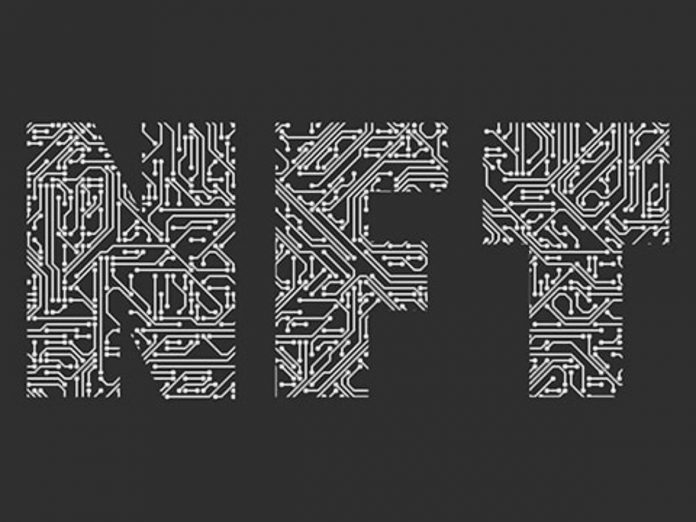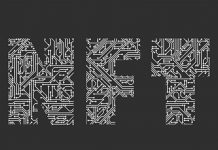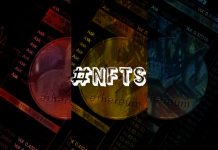This article is written by Dhruvi Bambal. This article has been edited by Yashprada (Associate, Lawsikho), Ruchika Mohapatra (Associate, Lawsikho), and Indrasish (Intern, Lawsikho).
This article has been published by Sneha Mahawar.
Table of Contents
Introduction
NFT was first made in 2014 and since then, NFTs have surged in popularity. In early 2021, former Twitter CEO Jack Dorsey made a tokenized version of the first tweet ever written, which was sold for over $2.9 million. Now in 2022, NFT trading has taken the digital world by storm. NFT trading platform Opensea is now worth $13.3bn. After the Internet boom, NFTs have the potential of being the next big thing.
What are NFTs
Before going into what NFTs are, let us first understand the fungible bit. In economics, a fungible asset is something having easily interchangeable units, such as money. So, for example, you may exchange a ₹10 note for two ₹5 coins and the value will be the same making this translation extinguishable. However, if something is non-fungible, the above transaction would be impossible. It has a unique feature that prevents it from being interchanged with anything else. The token portion of NFTs is related to digital. A digital asset can be tracked by its TokenID from the day of its minting to subsequent owners.
So, Non-fungible tokens are a new form of digital assets offering unique characteristics managed on a decentralised ledger (Blockchain). These tokens are not interchangeable, which means they cannot be traded for another token of the same type.
NFT’s : An evolution over the concept of cryptocurrency
Cryptocurrencies, just like actual money, are fungible/ interchangeable. While on the other hand, NFTs represent a paradigm leap from crypto. They are non-fungible, irreplaceable, and unique, but can be extended, which means they can be merged with other NFTs to generate another NFT.
This concept of digital representation of physical assets is not a new thing but non-centralised storage of information over blockchain technology is what makes it a game-changer.
This form of ownership of digital assets has gained prominence only after the COVID-19 pandemic when people learned to work from home, leisure activities shifted online and people were consuming more digital content online instead of going out. The rise of NFT has been a massive opportunity for digital art creators and other content creators to make money online. It’s also an opportunity to get recognition for their work making digital content and their artwork relevant.
NFTs can be programmed in innumerable ways. NFTs can be backed by assets both tangible and intangible. A painter can link their painting with NFT and incorporate the contractual right to earn a certain percentage of commission on every subsequent sale of NFT. For example – the first tweet sold as NFT was an intangible asset while Nike shoes tokenized and NFTied and stored in a vault for the buyer is an example of a tangible asset.
Why NFTs
Ownership of real estate is recorded by the registrar. Patent registration is kept at the patent filing office of a country. But the process further remains non- transparent. Assignment or selling of patents is not recorded anywhere and it is difficult to get information about the current owner of any patent. Here, NFTs kick in to play a game-changing role. If some patent is sold via NFT, the information would be instantly available and the general public would know the owner of it. The absence of intermediaries makes it market efficient.
In the same way, the need arose for ownership of digital content as distinguishable assets. In this digital age, anything can be duplicated endlessly- be it any document, a photo, a painting, memes, GIFs, gaming characters and even content such as memes, videos, digital avatars and other digital content difficult to secure Intellectual property rights. With the help of NFTs, such artwork can be tokenized to create a digital certificate of ownership. Thus, tokenizing these intangible assets could become a unique solution that allows them to be bought, sold, and traded more efficiently while reducing the probability of fraud.
NFTs can democratise the economics of buying and selling. Many people can own digital ownership of the physical asset. Multiple people can be made owners of the painting and share revenues. Since NFTs are based on blockchain, they can remove the intermediaries and make sales directly connect artists and audiences.
Are NFTs real assets
NFTs aren’t real assets. These are the metadata of assets that are added to a blockchain. Call them as a record of the real estate but not real property. This record is set up on the Internet that runs on gas. They are uniquely linked to a particular asset but that doesn’t mean the asset is unique. When you tend to mint and sell your art on the NFT platform you’re required to give information on how many copies of such pieces exist. NFTs are not limited to virtual currencies like Bitcoin and can be minted as per the creation of the NFT creator.
Smart contract on a blockchain
A smart contract on a blockchain is something very different from any traditional contract that we might imagine as a lawyer. It’s quintessentially a program that implies an automatic transfer of digital assets. There are Ethereum smart contracts for NFTs such as ERC721 and ERC 1155(Though such contracts do not provide Intellectual property rights) A smart contract is software that executes when certain circumstances are satisfied and is recorded on a blockchain. Because blockchains can execute contractual protocols, they have the potential to revolutionise digital rights management and other IP transactions. Smart contracts may be used to enforce intellectual property agreements such as licensing and ensure that payments to IP owners are made in real-time. These are not contracts that explore the scope of assets. Smart contracts are programs that are used to verify the ownership of assets.
Intellectual property rights involved when dealing with NFTs
Proponents of NFTs talk about an advantage NFT marketplace has for selling creative art because of the scope of continuing royalties and commission to marketplace platforms. Usage of NFT may simplify transactions with the added benefit of security.
That being said, NFTs do indeed have the potential to offer us a new way to monetize our Intellectual Property. IP owners should educate themselves on the merits and drawbacks of utilising this new technology to increase the value of their portfolio. As a result, seeking the guidance of IP counsel in these instances is critical to minimise the risk of possible difficulties.
As Intellectual property law deals with the creation of the mind, it makes them one of the most valuable assets for any business and persons of creativity. It’s an ultimate competitive advantage. Given the expanding scope of NFTs, Intellectual property rights are going to play a huge role in facilitating licensing and selling of Intellectual property. We see how NFTs are bound to shape the monetisation of the IPs.
Copyright and NFTs
Ownership of an NFT is simply a display on the shelf. There is a difference between having NFT ownership and the ownership of underlying IP or assets within the NFT. So when you buy an NFT, it’s just like you would buy a painting from an artist. You don’t get any copyrights with it. It’s just a representation of a physical asset without any of the 5 rights entailed in copyright- reproducing, performing, displaying, modifying, adaptation, publication.
Selling an NFT does not necessarily mean the transfer of copyright ownership unless an explicit contract is made. Once it passes the bridge of ownership and infringement issues, the transferor may via contract give away the right of reproduction adaptation, distribution, and display. However, the NFT buyer owns a “token” that proves they own the “original” work. It helps brand owners use NFTs for brand authentication and marketing of goods and services.
Since it requires reproducing the original work and transferring it to the client, any unlawful reproduction, distribution, or adaptation of an NFT may be deemed copyright infringement. Due to the decentralised nature of NFT ownership and the immutability of blockchain transactions, enforcing IP rights against a purchaser can be difficult once the NFT is sold. An NFT is often tied to a digital wallet address (similar to a bank account), although establishing the wallet owner’s identity may be difficult without advanced digital forensics. As a result, deploying forceful (but legal) takedown letters might prohibit the NFT from ever being marketed.
Discussing licensing agreements is important as they would be the backbone in buying and selling of NFT. The intellectual property of the works must be established within a licensing agreement, omission of which would lead to legal complications.
If the works are digital assets (tweet, photo, email, etc.), they don’t need digitisation and are ready to be minted and sold as NFTs in accordance with the licence agreement. If the works are physical assets, such as paintings or print materials, the first step is to digitise them. Once the physical work has been digitised, the licensee must decide how the NFT will be used. One alternative is to utilise an NFT as an authentication certificate or another way could be to redeem that physical asset.
Assignment of copyright would be a really interesting thing to watch as it unfolds in the future. The owner of NFT will be able to do all those things a copyright owner would have. NFT owner has the right to sue based on i.e to exclude others of its use.
Trademark and NFTs
NFTs do hold a connection with the trademark laws but no standard has been devised yet when it comes to trademark protection. Law offers no clarity on what could constitute trademark infringement, or if consumers are confused about the source or sponsorship of the NFT.
The artwork/digital asset can be registered as a trademark. The fact that the artwork has been tokenized does make choosing the goods or services for which the artwork will be utilised as a trademark any easier. Merchandising items are frequently of interest (e.g. T-Shirts, bags, screensavers, etc.). Another possibility is that a tokenized artwork will be utilised as a brand for a company’s goods/services. In this instance, the trademark for such things must be safeguarded.
When a business or any organisation is trying to mint their NFT, they want to make sure that their NFT and the underlying asset are unique. Law is too complex to answer whether a trademark owned by big fashion companies is for the underlying asset or does it also entail the right over the trademark/Copyright. Violations could include unauthorised parties committing trademark infringement when they mint an NFT connected to the underlying asset without the asset owner’s consent and market, offer for sale, and/or sell the NFT using the asset owner’s registered trademarks. If one wishes to mint a collaborative work, the permission of other creators must be sought expressly.
Patent law and NFTs
One of the most significant concerns with patent filing and application is that approvals take a long time. Inventors can utilise blockchain technology to collect royalties from others who utilise their intellectual property.
Here, a patent holder may choose to convert a granted patent into an NFT. This may make it simpler for investors and entrepreneurs to sell, exchange, and market patents. IBM is working with IPwe to create a patent marketplace on a blockchain. Nike has a patent for “cryptographic digital assets for footwear” which allows purchasers to confirm the validity of their purchases while also carrying a digital collectible version of their shoe in their wallet.
A smart contract would enable transactions that could be built into a token with the standard term of the patent assignment. Some caveats still lie in the implementation of NFTs for patents. Ownership of an NFT does not automatically result in ownership of the patent asset. Buying the NFT means you are the owner of the NFT in the blockchain. Although a proper agreement in writing will be necessary to complete the transfer of ownership and rights associated.
Ocean of possibilities
The introduction of NFTs has opened different avenues and vulnerabilities in terms of misuse of their intellectual property by any third party hence requiring way more protection for their IP. Metaverse is knocking at our doors. Fashion houses are launching their fashion clothing and conducting fashion shows in the Metaverse. This calls for Brands to plan to respond promptly to safeguard their intellectual property rights in the virtual world before third-party infringers in the metaverse infringe on their rights.
There is a need to explore licensing and assigning trademarks to digital innovators and artists in the metaverse in order to maintain and market their IPR as much as possible in the metaverse.
There are still a lot of questions to be answered. When there has been a breach of rights who would be responsible, would the platform be held liable as the asset didn’t hold on rarity or seller? So essentially a lot lies on the contract language of that platform and layered on that the description of NFT by the seller.
Because of the decentralised structure and immutability of blockchain transactions, enforcing intellectual property rights against a purchaser can be difficult once the NFT is sold. An NFT is often tied to a digital wallet address (similar to a bank account), although establishing the wallet owner’s identity may be difficult without advanced digital forensics. As a result, utilising forceful (but legal) takedown letters may prevent the NFT from ever being sold in the first place.
A lot of initial work would be required to create the digital representations of ownership of existing patents as NFTs. Difficulties may arise if transfers or licences were made but not recorded on the blockchain, thus creating conflicting records of ownership; however, work on such a marketplace has begun. Cryptokitties makers, Dapper labs proposed licence 2.0 to provide commercial use of bought NFTs.
NFTs and their real-world utility
Being able to secure and track ownership could open up far-fetching possibilities. They are just unique digital representations of real-world assets. Ever wondered about having got a University degree via NFT.
Into the unknown
Because NFTs are an unregulated market, there have been several cases of art copying and fraud in this field. Critics believe that could be another bubble ready to burst. This idea of buying something non-tangible for a million dollars still seems strange to many.
Other analysts worry NFT marketplaces are prone to so-called wash-trading where investors sell and then buy back an NFT they own intending to boost the demand.
It tends to have a huge impact on environmental well-being. The record of who owns which NFT is stored on a shared ledger known as the blockchain, a process maintained by thousands of computers worldwide. Keeping those computers up and running creates considerable demand for electricity. The same reason makes it expensive. Putting your asset as NFT is expensive which means you have to pay for gas, prices of which fluctuate.
It is assumed NFTs which use blockchain technology just like cryptocurrency, is mostly secure. The distributed nature of blockchains makes NFTs difficult, not impossible, to hack. One security risk for NFTs is that one could lose access to NFTs if the platform hosting the NFT goes out of business.
Difficulties may emerge if transfers or licences are completed but not registered on the blockchain, resulting in contradictory ownership records; nonetheless, development on such a marketplace has begun.
Conclusion
The boom of NFT has brought us to the precipice of a new era. Hence there is investment potential, trading potential and functional potential to authenticate things. Just like there was a gold rush we will witness an NFT rush, and we need to watch succinctly how things unfold.
NFTs are going to be both an opportunity and a threat. Complexities around legalities will only unfold later. For good or for worse NFTs are here to stay. What we need is legal reform to welcome them, make them a part of our life and have a copacetic existence. We need to make sure they add value to the current system of doing business. Legal standardisation must be insured in order to be sustainable. Lawlessness over its scope is not good.
References
- https://nftplazas.com/
- https://www.reuters.com/legal/transactional/what-are-copyright-implications-nfts-2021-10-29/
- https://www.nortonrosefulbright.com/en/knowledge/publications/1a1abb9f/nfts-and-intellectual-property-rights
- https://www.wipo.int/wipo_magazine/en/2021/04/article_0007.html
- https://blogs.orrick.com/blockchain/three-ip-issues-to-watch-out-for-when-it-comes-to-nfts/
- https://www.khuranaandkhurana.com/2021/11/15/nft-and-its-relationship-with-ipr/
Students of Lawsikho courses regularly produce writing assignments and work on practical exercises as a part of their coursework and develop themselves in real-life practical skills.
LawSikho has created a telegram group for exchanging legal knowledge, referrals, and various opportunities. You can click on this link and join:
Follow us on Instagram and subscribe to our YouTube channel for more amazing legal content.
 Serato DJ Crack 2025Serato DJ PRO Crack
Serato DJ Crack 2025Serato DJ PRO Crack











 Allow notifications
Allow notifications



